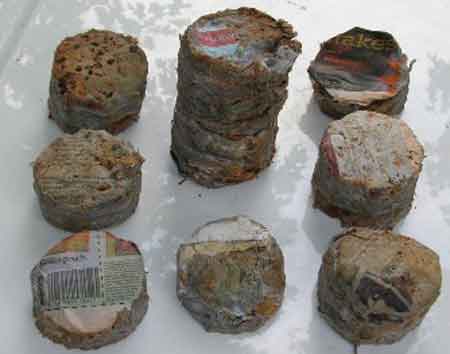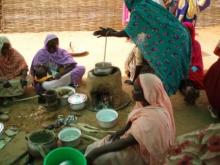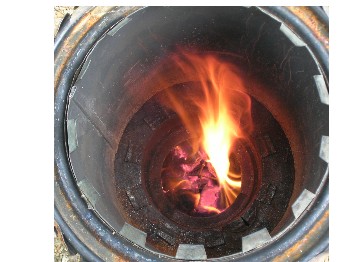The First Sixbricks Rocket Stove in Darfur
Ken Goyer, AID Africa, Dan Wolf, International Lifeline Fund,September 4, 2006
Yesterday we had our first demonstration of the SixBricks Rocket stove in North Darfur. We had successfully fired about 1,000 of our special lightweight bricks using a local brickmaker, and now we have now started to show off the stove. Our first demonstration was a huge success. While the demonstration was intended to show the stove to a few nonprofit organizations, about 100 women came and took over the cooking action.The local staple food, aceda, was made in the largest round bottomed pot and then meat and sauces were cooked in other pots. The surprise was that after cooking this large and rather complicated meal, two thirds of it was handed over the fence and spirited away into a hut where some men were gathered. So the women were left with very little to taste. None the less they were very happy with the performance of the stove.
The political situation here remains touchy and for various reasons we will not travel to Kebkabia. Instead, we will stay here and work in El Fasher for now. Next, we hope to start a demonstration stove project in a camp which is actually a part of El Fasher. This way, access is easier, and it is safer, and still there are 32,000 people there, desperate for fuel with no trees in sight. Traveling even to the closest outside camp requires permits and permission and some worry about personal security or at least the theft of your vehicle by various rebel groups.
I have attached two photos to this email. The first one is of the stove and the second one is looking the other way at the crowd. Dan Wolf, founder and director of the International Lifeline Fund, and the benefactor of this project, has decided to rename the stove the "Miracle" Stove. I told him that it should be called the "Science" Stove, but that name just doesn't have quite the same ring.
Thanks to everybody who has made the invention and development and dissemination of this stove possible. The fruits of our labor are about to ripen.
Best regards, Ken Goyer
sneakers







